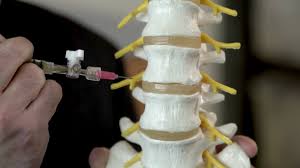
Breaking News
 America's Fraud Is Bigger Than You Think
America's Fraud Is Bigger Than You Think
 Anti-Aging Drug Regrows Knee Cartilage in Major Breakthrough That Could End Knee Replacements
Anti-Aging Drug Regrows Knee Cartilage in Major Breakthrough That Could End Knee Replacements
 First Nation Innovates Prefabricated Housing System from Locally-Sourced Wood
First Nation Innovates Prefabricated Housing System from Locally-Sourced Wood
 Why Americans Love Individualism But Hollywood Fights It
Why Americans Love Individualism But Hollywood Fights It
Top Tech News
 Kawasaki's four-legged robot-horse vehicle is going into production
Kawasaki's four-legged robot-horse vehicle is going into production
 The First Production All-Solid-State Battery Is Here, And It Promises 5-Minute Charging
The First Production All-Solid-State Battery Is Here, And It Promises 5-Minute Charging
 See inside the tech-topia cities billionaires are betting big on developing...
See inside the tech-topia cities billionaires are betting big on developing...
 Storage doesn't get much cheaper than this
Storage doesn't get much cheaper than this
 Laser weapons go mobile on US Army small vehicles
Laser weapons go mobile on US Army small vehicles
 EngineAI T800: Born to Disrupt! #EngineAI #robotics #newtechnology #newproduct
EngineAI T800: Born to Disrupt! #EngineAI #robotics #newtechnology #newproduct
 This Silicon Anode Breakthrough Could Mark A Turning Point For EV Batteries [Update]
This Silicon Anode Breakthrough Could Mark A Turning Point For EV Batteries [Update]
 Travel gadget promises to dry and iron your clothes – totally hands-free
Travel gadget promises to dry and iron your clothes – totally hands-free
 Perfect Aircrete, Kitchen Ingredients.
Perfect Aircrete, Kitchen Ingredients.
 Futuristic pixel-raising display lets you feel what's onscreen
Futuristic pixel-raising display lets you feel what's onscreen
New technique both refills and patches herniated discs

Between each of our vertebra is a shock-absorbing spinal disc, which consists of a rubbery exterior known as the annulus and a jellylike "filling" called the nucleus. Herniated discs occur when a tear in the annulus allows some of the nucleus to leak out and bulge into adjacent nerves, irritating them.
Surgical treatments typically involve either removing the protruding nucleus and then sewing up the tear in the annulus – leaving the disc "deflated" – or refilling the disc with a replacement material, which may eventually also leak out through the unpatched hole.
Led by Cornell University's Prof. Lawrence Bonassar, scientists from the US and Italy have developed a procedure that combines the refilling with the patching. It's performed after a discectomy, which is the standard process for removing the leaked nucleus material.



